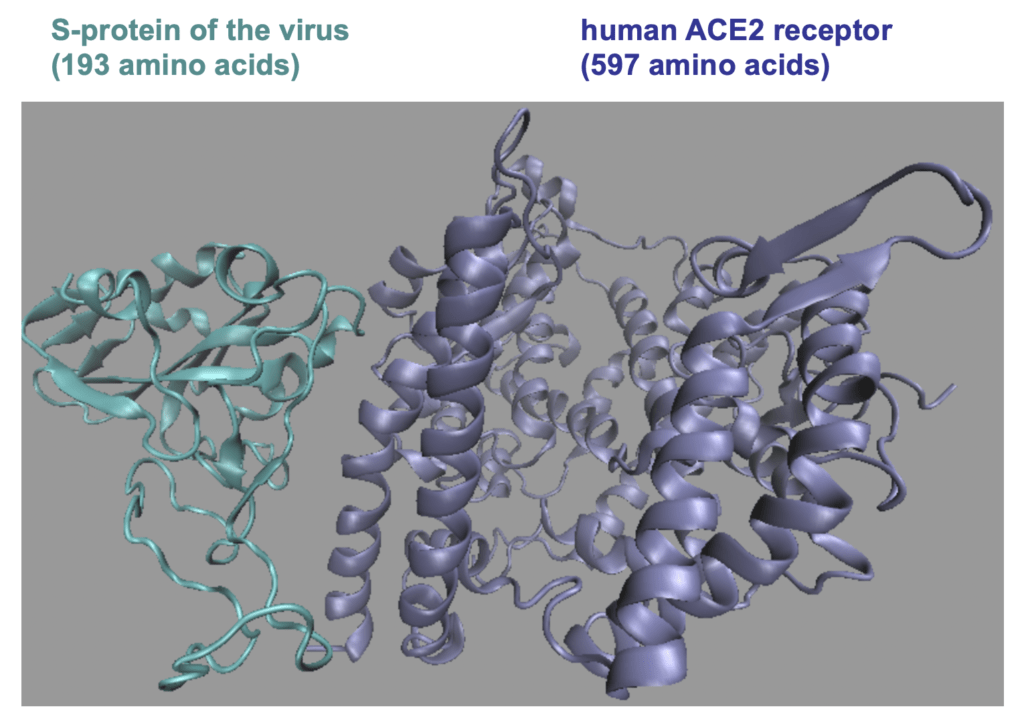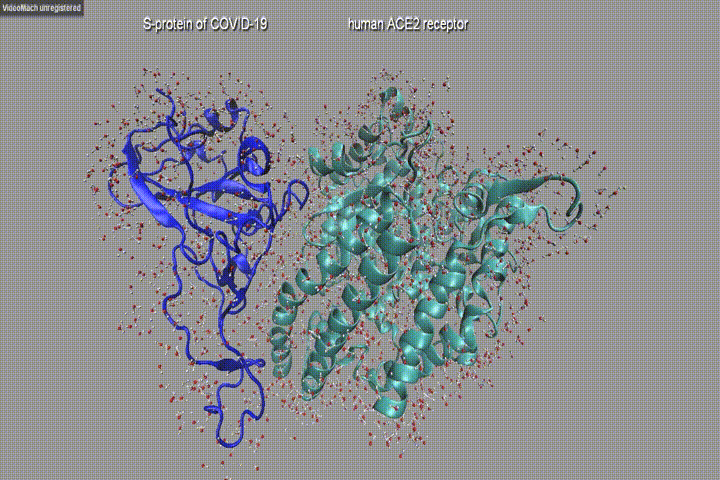We are making efforts towards vaccine design for COVID-19 coronavirus, targeting for which part of S-protein interacts mostly with human ACE2 enzyme. Molecular simulations are utilized to explore the stability and the binding between the proteins. Durg/vaccine molecules will be screened to find the hit that binds to S-protein stronger than human ACE2 receptor in order to prevent spread.
Update on Apr 27: Our story is shown on NYU Shanghai Gazatte: https://shanghai.nyu.edu/news/nyu-shanghai-faculty-research-seeks-solutions-post-covid-19-world
One in a Million: First Steps Toward a Vaccine
Assistant Professor of Chemistry Sun Xiang is taking the most direct approach to ending the coronavirus pandemic: finding a potential source of a vaccine for SARS-COV-2, the virus which causes deadly COVID-19 infections. Using computerized molecular dynamics simulations based on the latest developments in reaction rate theory, Sun and Postdoctoral Fellow Tong Zhengqing are trying to identify a molecule that will bind quickly and tightly with the novel coronavirus’s spike protein. Since a COVID-19 infection begins when the virus’s spike protein binds to a human cell’s Angiotensin-Converting Enzyme 2 (ACE2) receptor, a molecule that binds to the spike protein will block the virus from attacking human cells.
The initial identification of such a particle is the most difficult stage of vaccine development, Sun says, since there are thousands upon thousands of candidate molecules. Potential vaccine particles range from small inorganic chemical molecules to small peptides, or short strings of amino acids which form the building blocks of proteins.
“The biggest challenge for finding a drug for COVID-19 is to screen candidate drug molecules systematically and efficiently, which can really only be done using computational simulations,” says Sun. “Even with our advanced technology, in principle, we could go on running simulations with new candidates forever since there is a huge database of small candidate molecules, including new molecules that could be synthesized.”
But Sun is confident that an answer is out there, and that his team could provide vaccine developers with the key building block of an effective inoculation.
“We cannot promise any timeframe of finding the vaccine for COVID-19, but our research will be able to provide some guidance for COVID-19 vaccine discovery and answer the questions of if, and especially how fast, a drug molecule could bind to the virus,” he says.

Sun and Tong’s simulation of the interaction of SARS-COV-2’s spike protein (left, in purple) and a human ACE2 receptor (right, in green) with molecules in an aqueous solution. Image by Tong Zhengqing.
You must be logged in to post a comment.